Brigadier General Giora “Hawkeye” Epstein (also called Giora Even) of the Israeli Air Force (IAF), is a fighter ace credited with 17 victories, 16 against Egyptian jets, making Epstein the “Ace of Aces” of supersonic fighter jets. Epstein was an active IAF pilot from 1956 until May 26, 1997, when he retired at age 59. Like many retired IAF flyers, he later worked as a pilot for El Al Airlines.
Early Years
Born on 20 May, 1938, in Negba, British-mandate Palestine, he grew up in the traditional frontier-farmer lifestyle of his home, Kibbutz Negba. Born Giora Epstein in the Holy Land in the decade before Israel won her independence. An avid aviation enthusiast as a young boy, he poured over flying books and studied the biographies of Britain’s wartime aces.

Struggles to Become a Pilot Due Medical State
After the 1956 Suez War, the 18 year old joined the Israeli Defense Force (IDF) and applied for flight training but was rejected for medical reasons. Enraged, he went to his commander and told him that if he could not be a pilot, he wanted to be a paratrooper. He served in the Efah Para Battalion (890th). He eventually made over 700 jumps and was a para instructor and a member of the IDF’s parachute demonstration team. Before travelling outside Israel to the world parachute championships, he changed his name in accordance with IDF regulations. (The Israel’s Names Law established that Israeli citizens must adopt Hebrew names). He chose the last name “Even” (“stone” in Hebrew). Epstein left active duty in 1959, but life on the kibbutz left him restless and unfulfilled. He rejoined active service in late 1961 and reapplied for flight training, trying again to attain his dream of becoming a fighter pilot. The doctors determined that he had a “sportsman’s heart,” a condition resulting in unusual indications during examinations, but not a medically disqualifying factor for flying.

Pushes Case for Fighter Flying
He cleared the first hurdle and entered flight school, but he was not yet in a fighter. Although he was at the top of his class in 1963, the doctor had apparently allowed him to enter flight training only on the condition that he fly helicopters. So he first served as an IAF helicopter pilot. After he filed another appeal to the IAF, he was assigned to a combat helicopter pilot position. Epstein was determined though, and while flying helicopters, he sent his medical records to an expert USAF cardiologist who confirmed that his medical condition should not keep him from flying fighter aircraft. Armed with this recommendation, he took his complaint all the way up the IAF chain of command until he ended up sitting in the outer office of Ezer Weizman, legendary IAF commander, later seventh President of Israel. Even put his career on the line, stating emphatically, “I’ll sit in your reception hall until you send me to fighter training.” It worked. After deliberating all night, Weizman called him and said, “You SOB, get your things and go to the fighter OTU. I don’t want to hear another word.” After seven years and countless obstacles, he was finally on his way to becoming a fighter pilot! Because of his stubbornness, Epstein received the necessary medical clearance and began training to become a fighter pilot. This stubbornness would not only prove to be good for the pilot, but for the nation he served.

Begins Fighter Flying
Beginning 1963, he began to fly frontline fighters, including Dassault Ouragons, Super Mysteres, and Mirage IIIs, Israeli Aircraft Industries (IAI) Neshers and Kfirs; and General Dynamics F-16 Fighting Falcons. He soon gained the nickname “Hawkeye” due to his extraordinary eyesight. Epstein was allegedly able to spot aircraft at a distance of 24 miles (44 km) — nearly three times further than a normal pilot.
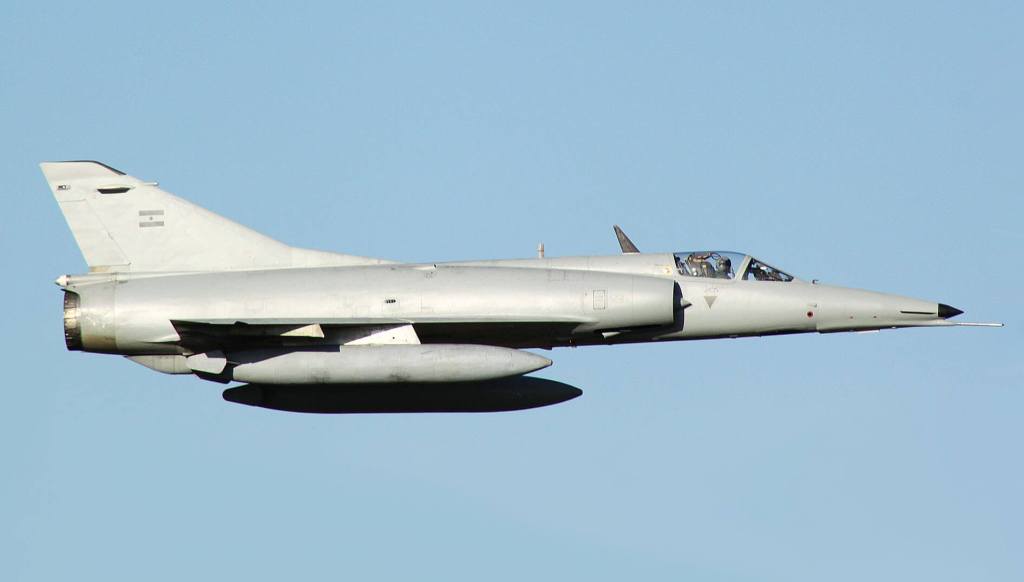
Six-Day War – 1967
Epstein’s first kill came on June 6, 1967 during the Six-Day War, when he downed an Egyptian Sukhoi-7 at El Arish. During the War of Attrition in 1969–70, Epstein served as deputy commander of the air force squadron, and downed a MiG-17, another Sukhoi-7 and two MiG 21s.

Recalls Beginning of Yom Kippur War -1973
In an interview to Yaakov Lappin of Jewesh News Syndicate on 08 October 2018, Epstein recalled that when the Yom Kippur War erupted in October of 1973, Epstein was an officer serving at the Israeli Air Force’s headquarters in Tel Aviv, in the Operations Department. On Friday, the day before the war began on 06 October, he traveled south to Refidim air base in Israeli-controlled Sinai to be part of an emergency stand-by team for his 101 Squadron of Mirage jets. While at Refidim, Epstein began receiving phone calls from the IAF’s headquarters in Tel Aviv, as it became clear that war was drawing closer. Headquarters ordered Epstein to return, viewing his work in the IAF’s Photography Branch, where he planned intelligence-gathering flights, as being of crucial importance.
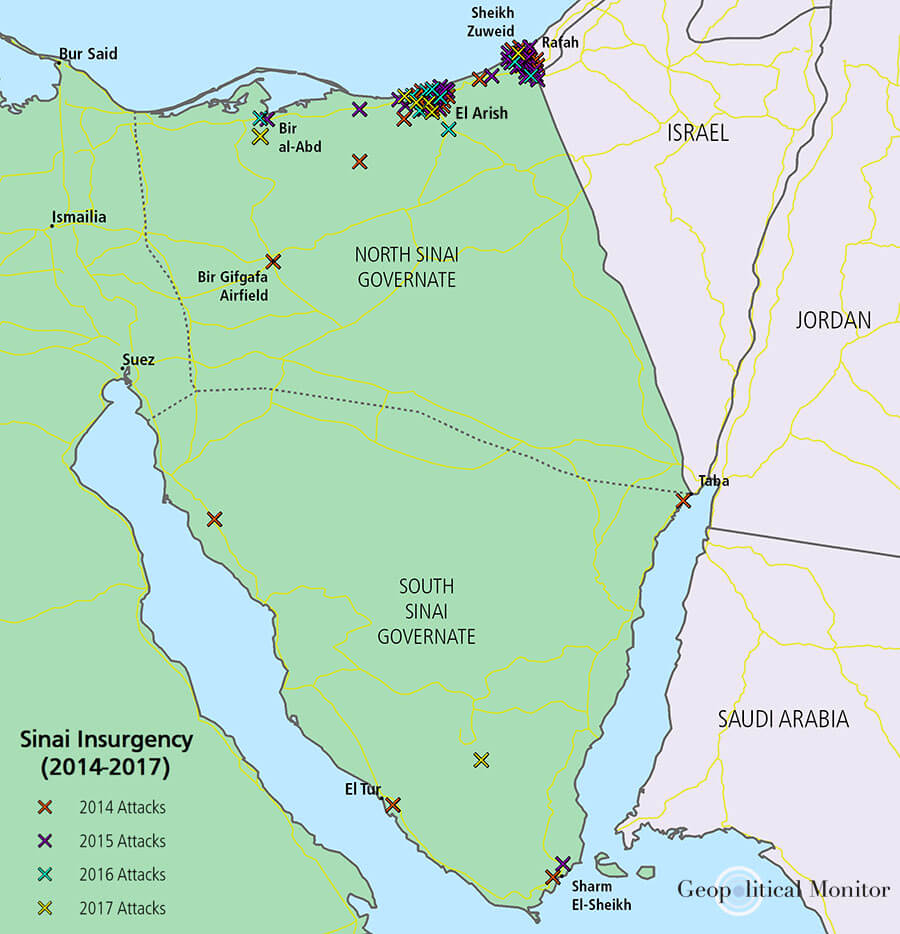
Epstein returned to Tel Aviv, and the next day, began issuing orders for aerial photography flights over the Suez Canal. “Then, at around five minutes to 3 in the afternoon, an intelligence person tells me that the whole of the Egyptian and Syrian air forces are in the air, and that they are on the way to Israel,” he recalled. “I immediately called the bureau of the IAF commander. He was in a commanders’ meeting. They headed underground to the IAF’s command room immediately and took control. I was appointed to coordinate air-to-ground attacks, even though it wasn’t my job. But at the time, nobody else was responsible for that.”

Epstein was sent to the underground control room of the Artillery Corps, where he spent two days overseeing air strikes on advancing enemy forces. He then headed back to the Photography Branch, spending days in war planning and operations. On a few occasions, he also took to the air, joining his squadron for air patrols and a night flight. But after 10 days of raging conflict, Epstein had decided that the time had come to fully join the air battles that were raging between the Israeli and Egyptian air forces.

Seeks Permission to Leave HQs and Join War
“I went to my commanders and said I had to go to my squadron because I feel that I am not taking part in war,” Epstein recalled. By that time, the IAF’s headquarters had filled up with enough people to operate at full capacity, and Epstein was given the green light to join his squadron.
First Aerial Kill of Yom Kippur War – Mi-8 Helicopter
On 18 October, Epstein was in the air, patrolling the Suez Canal and about to get his first taste of action. “We called this patrol ‘turning off the sun’ because it was the last patrol of the day. We would fly until the last light of day and then land, allowing Phantom planes to continue the patrols because they had radar. We in the Mirage jets did not have radars,” he explained. “When it got really dark, the air controller told us to land at Refidim (front-line airbase in Sinai desert).” But suddenly, the controller came back on the radio, telling them to abort the landing and head straight back to the Canal, where an Egyptian air assault was underway. The IDF ground forces were preparing to cross the Suez Canal into Egypt, and the Egyptian planes had come to bomb them. Epstein flew into the area and spotted a napalm bomb explode on the ground. “Against the background of the blast, I saw the silhouette of an Egyptian Mi-8 helicopter, with its back door open and the crew rolling off napalm barrels onto our forces,” he said. “I did the tightest turn I could, placed the helicopter in front of my gun sights and released a burst of cannon fire. The helicopter entered the burst and exploded.” Epstein had just completed his first shoot-down of the war.
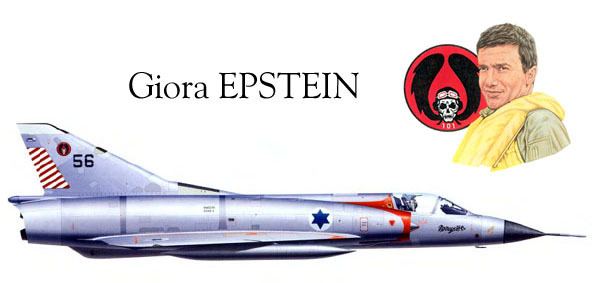
First two Su-7 Kills and Wall of Fire
Epstein was mostly assigned the “filling holes” sorties. That meant that his mission was to fill in for planes that were on patrol, and then became engaged in air battles, before using up their fuel and having to land. On 19th October, Epstein and a second pilot were scrambled to the Suez Canal, after being told that an Egyptian attack was forming and a hole had formed in the Israeli patrol. “We sped to the Canal and when I got there, I saw to the west a convoy of four pairs of Sukhoi – 7 Egyptian planes, which were arriving to attack. We turned hard and went after them,” he said. “I did not manage to catch the first pair, but I caught the second pair. As they were diving towards our ground forces on the canal, I fired a missile at the back plane and struck it. It continued to dive straight into the canal, crashing into it. Then I turned and flew after the second plane that was fleeing west to Egypt. It released munitions west of Canal and escaped. I pursued it.” Epstein was attempting a high speed low-altitude pursuit, but he knew he was approaching a known trouble spot. “We called this area ‘the wall of fire.’ Because every Egyptian there with whatever weapon they had would raise their weapons and fire in the air, so it was very dangerous to cross that line. I said to myself, ‘I’ll pursue up to that line. If can reach him, OK, if not, then no.’” As they approached the “fire wall,” Epstein fired a small burst from his cannon that exploded in front of the Egyptian plane. “This startled him, and he turned. As soon as he turned, I had a target, fired a burst, struck the plane, and he crashed into the ground. I returned to land at Refidim,” he said.

Two More Kills
Hours later, Epstein scrambled to join a formation of Israeli Phantoms that was patrolling the Suez Canal. They spotted a convoy of Egyptian planes, attacking from the west, and Epstein engaged. He hit one enemy plane with a missile, causing it to blow up in mid-air. The Egyptian pilot ejected just before being hit. “He descended over the battle area, waving his arms and legs. Of course, none of us fired at him,” said Epstein. He continued onwards, destroying another aircraft with a machine-gun burst.
When Epstein Fought off 11 Enemy Jets Alone
Epstein recalls that on 20th October, he was back in the air, once again on a “filling holes” mission. It was a four-aircraft formation. “We took off, flying towards the Canal. We had not yet been assigned a target,” he said. “When we reached the Canal, the controller told us to fly at 20,000 feet and search for adversaries. I reported seeing nothing. The controller told me to look south, and sure enough, I saw a pair of Mig-21s coming from south to north, at our attitude. When they reached us, they turned west towards Egypt. We pursued and closed in on them, fast. I fired a missile at the back plane, struck it, and it exploded. Then I went after the second plane, which was maneuvering to avoid being shot down.”

Logan Nye of “We are the Mighty”, wrote about Epstein’s this encounter. The Israeli Air Force’s Nesher was a highly-capable delta-wing fighter based on the French Mirage. Israeli Col. Giora Epstein, one of the world’s greatest fighter aces of the jet era, was leading a flight of four planes during the Yom Kippur War when his team spotted two Egyptian MiG-21s. Epstein pursued the pair and quickly shot down the trail plane. But the Israelis got a surprise. The pair of MiG-21s were a bait. While the four Israeli planes were pursuing the surviving MiG they could see, approximately 20 more MiG-21s who suddenly ambushed them. What followed was a very classic one sided victories of modern aerial combat. The four Israeli Neshers fought the approximately 21 MiGs, coordinating between them for tail clearance from Egyptian MiGs and identifying vulnerable aircraft to chase and shoot.
Unfortunately for the Egyptian pilots, the Mig-21s flew at them from a low altitude at low speed, meaning that when they reached the Israelis’ altitude, they “did not have a big advantage,” stated Epstein. A major air battle had, however, begun. He recalled later.

Every plane in the Israeli formation began fighting, firing missiles and machine-gun bursts at the Egyptian aircraft. During the fight, Epstein’s No.2 shot down a MiG but the missile firing resulted in his aircraft engine flame-out. Epstein talked him through a restart and sent him home. His No.3 shot a MiG but was running out of fuel and went back to base to land. The No. 4 pursued a plane and brought it down, but moved away from main battle.
Epstein was left alone in the fight with 10 MiG-21s, and out for vengeance for their lost comrades. Epstein’s immediate target pulled off a maneuver thought impossible in a MiG-21, split S at approximately 3,000 feet. Normally the MiG should have crashed but it barely survived. It was so close to the ground that it raised the sand of the desert. “At this stage, I’m pursuing a plane, and he is maneuvering like crazy to avoid getting shot down. He reached a low altitude and lost speed. When he finished his maneuver, I struck him with a (gun) burst, and the plane exploded,” he said. The MiGs engaged in pairs against Epstein, firing bursts of machine gun fire and missiles. Epstein outmaneuvered them, killing two with 30mm cannon fire and forcing the rest to exit combat. The entire battle lasted 10 minutes. “I finally ran out of fuel so went to land at Refidim,” said Epstein.
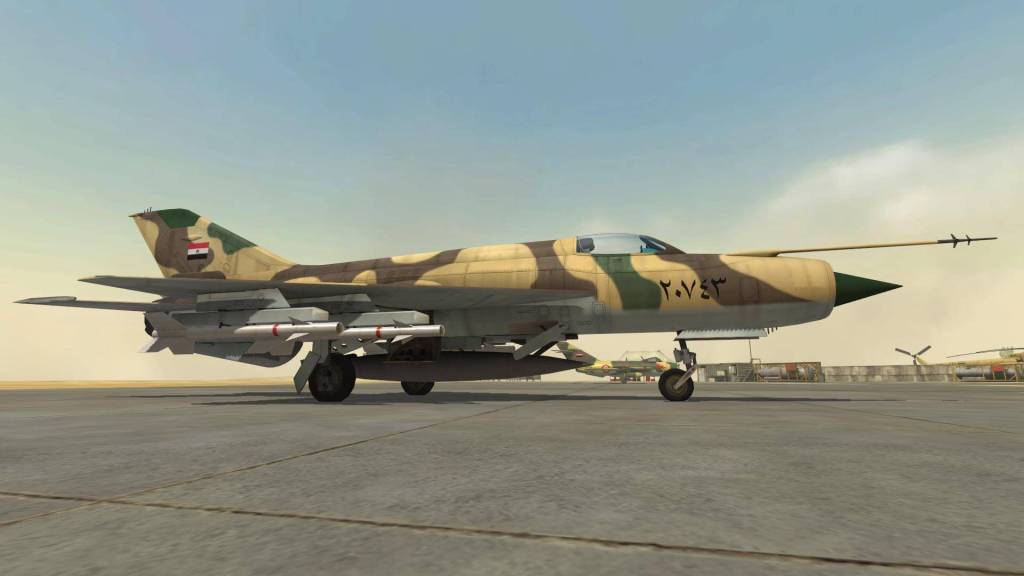
Effectively, Epstein had shot down the lead MiG of the decoy pair, then managed to outduel the other five pairs of MiG-21s shooting down two of the Fishbeds. When he returned to base, having scored four kills that day, ground crew lifted him from the plane. Within 40 hours, he had destroyed a total of nine enemy aircraft.
What about Us? We want to Join the Battle
Three days later on 23 October, Epstein was flying in a four-aircraft formation. They were replacing another patrol that was running low on fuel. As the planes that completed their patrol moved towards their base to land, the controller suddenly shouted out, “negative on going home,” and directed them to fly towards an area where enemy activity had been detected. “They turned towards the battle. Over the radio, Epstein asked, ‘What about us?’ The controller said, ‘You go on patrol.’ Epstein said, ‘You go on patrol. I’m going to the battle. Where is the battle?’ He didn’t want to tell us, but we knew where it was. As we approached, we saw blasts in the sky and aircraft crashing.” Epstein had flown into the largest battle of the Yom Kippur War. Ten Israeli Mirage jets were up against 20 Egyptian Mig-21s. Once again, the Egyptians had planned an ambush.
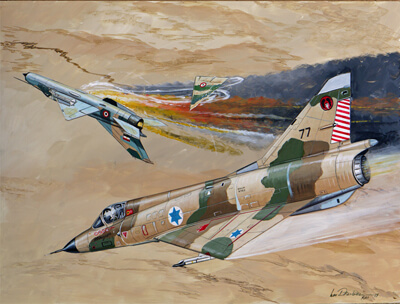
“They were very frustrated that we shot them down all of the time,” said Epstein. During that battle, Epstein shot down three aircraft out of that sky. In total, the Israelis destroyed 11 Egyptian planes in the battle. On his way back to landing, Epstein’s base commander called in. “He received the details of the battle, congratulated us, and then informed us that the war had ended,” recounted Epstein. “My feeling to this day hasn’t changed. We did our job in the best way we could.” Epstein bagged three more Fishbeds, giving him 11 fighter kills in less than a week. What a badass pilot said his colleagues.

Summary of 1973 Yom Kippur War
Already an ace with 5 kills from previous conflicts, on 18-20 October 1973, Epstein skillfully flew his 101 Squadron Nesher to eight victories over Egyptian aircraft in 26 hours. He downed a Mi-8 helicopter and eight jets: two Sukhoi-7s, two Sukhoi-20s and four MiG 21s. Then, on October 24, 1973, Epstein downed three more MiG-21s west of the Great Bitter Lake. Eight of these victories were with the French-built Mirage III, a delta wing fighter designed primarily as a high altitude interceptor. His other nine victories came in an IAI Nesher, an Israeli-built version of the Mirage 5. Five of his kills were downed using air-to-air missiles, the rest with cannon. Through this incredible accomplishment, he achieved legendary status in the IAF and became the top scoring Israeli ace of all time.

Post War Career and Air Flying Summary
After the Yom Kippur War, Epstein received the Medal of Distinguished Service, one among Israel’s high military honors. In 1974, he was appointed commander of the IAF 117th Squadron, also known as the First Jet Squadron. He went on to command Mirage and Kfir squadrons and was flying “ready” missions in the F-16 up until his 59th birthday. In 1977 Epstein retired from permanent service. As a reserve officer, he commanded the IAF’s 254th Squadron and after he completed a retraining process he became a F-16 pilot. He accumulated over 5,000 hours of fighter flying and scored 17 victories making him Israel’s “Ace of Aces”. During the 1973 Yom Kippur War, he shot down 12 Egyptian aircraft, eight of them in 26 hours! Giora Epstein, effectively shot down more enemy aircraft than any other pilot since World War II.
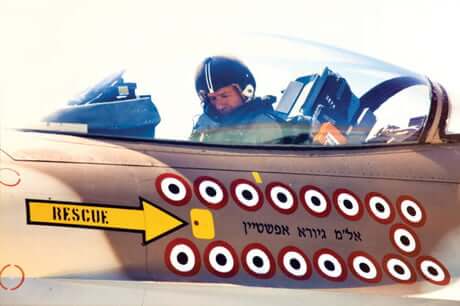
Professional Modesty
Yaakov Lappin did an interview with Brig.-Gen (retd) Giora Epstein on October 8, 2018, and talked of his battles with the Egyptian air force in the Yom Kippur War. Epstein, who took part in many life-or-death dog fights displayed remarkable skill and cool-headedness. But when asked, he very modestly said that it was simply the results of his training and of sticking to his mission, and that he was merely doing his job. “It does not give me any sense of elevation. I simply did what I had to do and took advantage of every situation that I had,” Epstein said matter-of-factly.

Feelings as a Fighter Pilot
“We were not thinking about grand ideas, like defending the country during battles. The feeling during a battle of a fighter pilot is about how to conduct this battle in the best way. You’re not thinking about spiritual stories or anything else. You’re focused on what you’re doing, on how to manage to take care of yourself in the best way and hit the enemy as much as possible. Those are the two things. Beyond that, there are no thoughts. It’s about doing all of the things you trained for and knowing how to do them in the best way you know how.”

Post Air Force Career
Epstein was a Captain for El Al Airlines from 1977 to 1997. He had sought, but was not allowed to participate in combat in the Bekaa Valley Turkey Shoot of June, 1982. He added another 4,000 flying hours post retirement making an impressive total of 9,000. Epstein was the primary subject of the “Desert Aces” episode of The History Channel series “Dogfights‘. The episode first was aired on August 10, 2007.

Honour at 80 – Brigadier-General Rank
IDF Chief of General Staff Lt. Gen. Gadi Eisenkot and Israel Air Force (IAF) Commander Maj. Gen. Amikam Norkin awarded the rank of Brigadier-General to Giora “Hawkeye” Epstein, 80, former IAI pilot and the world’s flying aces champion in September 2018. Yoav Zitun wrote about the cermony for ynetnews.com. The ceremony was held at the IAF headquarters in the presence of air force veterans, Epstein’s family members, and other distinguished guests. Chief of Staff Eisenkot praised Epstein at the ceremony. “This modest ceremony is an expression of our great appreciation to you personally, and to the generation of founders who developed the extraordinary abilities of the IDF and the State of Israel,” Eisenkot said. “The legacy that is passed over to pilots and air force commanders is a legacy of tremendous commitment, of winning every battle, of completing the mission, and of excellence as a way of life,” he continued. “The spirit of man and the spirit of the fighter who carries the weight of the battle on his shoulders characterizes you, Giora, as a fighter pilot. I wish you good health, success, and wish us all a happy new year,” Eisenkot concluded.

“This rank is a clear statement. We appreciate those who fought for our homeland, we are aware of the size of your contribution throughout Israel’s wars and we are proud to have a world champion in our midst,” Israel Air Force commander Maj. Gen. Amikam Norkin said at the ceremony. ” I am proud to be the commander of the air force, who awards the Brigadier General rank to a world champion fighter pilot,” Norkin concluded.

Israeli Flying Aces
There are a total of 14 Israeli Air Aces. The next highest after Epstein were Abraham Salmon with 14.5, Amir Nachumi with 14, Asher Snir 13.5, Israel Baharav and Yiftah Spector with 12.
Picture Credit: iaforgil


So much to learn from Israely Leadership !
A must for All of Indian Cadets n also our Youth in the NCC !
MAJ GAURAV AARYA NEED TO TALK OF SUCH MARVELS IN LEADERSHIP ON HIS SHOWS !
HATS OFF ISRAEL !
LikeLike
Agree with you. Regards
LikeLike
“Hawkeye” epitomizes what a fighter pilot should be. Dedicated, stubborn, and hard working. aggressive in nature. Cool-headed in battle, as a leader remained one and displayed qualities of leadership in the thick of the battle, “During the fight, Epstein’s No.2 shot down a MiG but the missile firing resulted in his aircraft engine flame-out. Epstein talked him through a restart and sent him home.” A product os a professional Air force.
LikeLiked by 2 people
Absolutely. Well summarised. Regards
LikeLike
Congratulations, I am John Schneider, my father taught (along with others) the WW2 B29 flyers how managed the bombers controls in WW2.
LikeLike
Great to know that John
LikeLike
I served in the 1960’s in the IDF paratroopers and met Giora Epstein during those years. He was a born flyer. A fantastic skydiver and I remember his struggles to become a pilot. We were all in awe of him and his skills. I will be turning 79 in April and still cherish those days when I was in my 20’s. He is one of a kind
LikeLiked by 1 person
Great to know that.
LikeLike